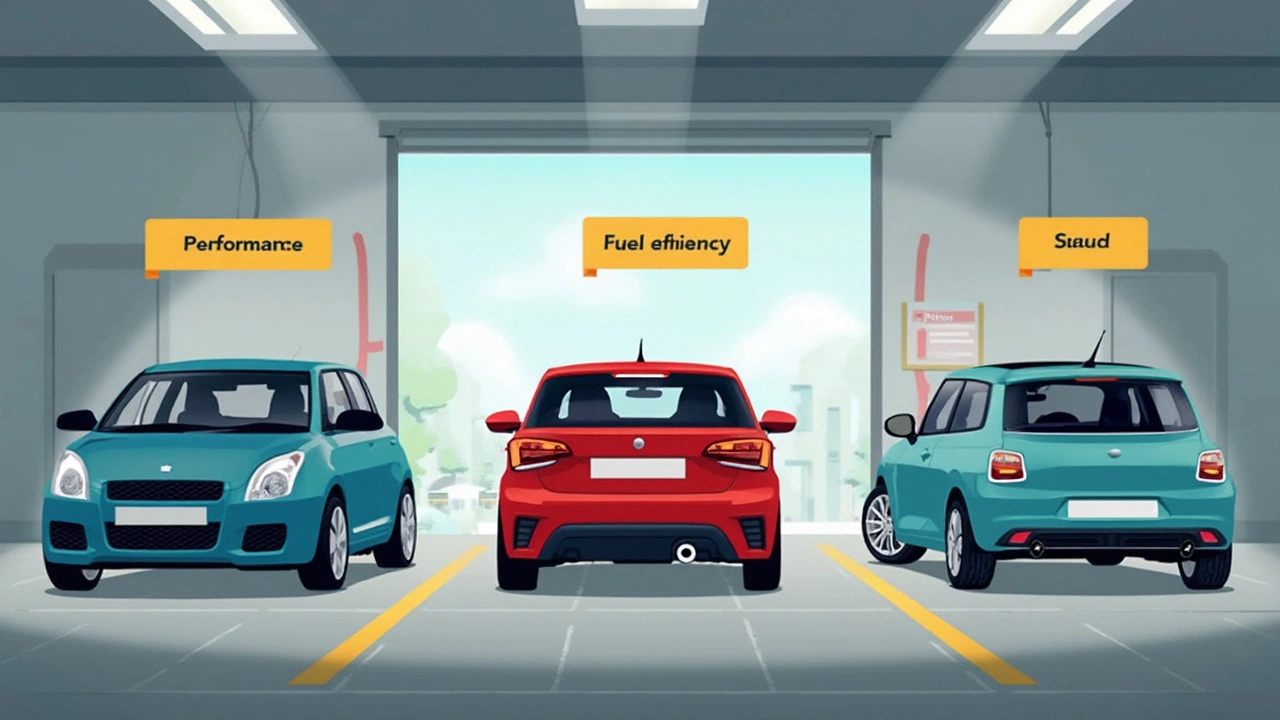Would you believe there’s a whole world of passionate debate about car exhausts? Some folks say swapping out the standard pipes will unleash hidden potential, while others reckon you might be picking a fight with your engine (and the MOT inspector). For so many car owners, the exhaust feels like the easiest knob to turn or screw to twist for a little more growl and power. But does changing your exhaust really affect your engine in a meaningful way, or is it just sound and fury? Let’s go far beyond the myths and Instagram reels to get under the bonnet and see what’s really at stake when you swap that exhaust.
What Does the Exhaust System Actually Do?
It’s not just for show or sound. Your car’s exhaust clears waste gases away from the engine, dumps them safely out the back, and helps control temperature and emissions. The system usually includes a manifold, catalytic converter, resonator, muffler, and all those twisty pipes. Altogether, it’s designed to work in harmony with your specific engine, balancing things like backpressure, airflow, and emissions. Let’s break down what those mean and why they matter.
Backpressure sounds like something you’d want to eliminate—but your engine actually relies on a certain level. Too much backpressure and the engine feels ‘choked,’ losing power and efficiency. Too little and the engine can run rough, with a loss of torque and odd fuel behaviors, especially at low RPMs. Airflow is critical too: as gases leave the engine cylinders, faster flow can boost power if tuned correctly. Yet, changing the balance too much or too little can lead to all sorts of issues, from poor combustion to higher fuel usage.
The exhaust also plays a bit-part in reducing temperature. Hot gases exiting the combustion chamber need a controlled escape; too hot or too slow, and you risk warping valvetrain components or even engine knock. This is why factory exhausts are often a compromise—meeting strict noise, emissions, and cost standards, but not always tuned for maximum performance. Swap anything here and you start fiddling with a delicate equation that the manufacturer spent years perfecting.
And there’s the overlooked matter of emissions. The catalytic converter scrubs out nasties like NOx, hydrocarbons, and carbon monoxide, helping your car pass legal requirements. Fiddle with the exhaust the wrong way and you might see warning lights, ugly smoke, or even fail the next MOT in Manchester. It’s not a small tweak; it’s part art, part science.
Common Reasons Drivers Swap or Upgrade Their Exhausts
The reasons for exhaust modifications are as varied as the drivers themselves. The most obvious? People want better sound. That throaty rumble you hear on a summer evening isn’t always coming out of a factory pipe. Many exhaust upgrades are actually about tuning the sound, rather than boosting performance. Muffler deletes, resonator cuts, or performance systems all change acoustics, sometimes to the delight—and sometimes to the irritation—of neighbours.
Then there’s the crowd chasing more power and a better driving feel. On paper, a less restrictive exhaust can increase horsepower and torque, particularly if the original system was quite restrictive. This tends to be more pronounced on older cars or performance models, but it requires the rest of your engine—and intake system—to play along. Just swapping the pipe rarely unleashes anything dramatic unless you’re already pushing big modifications elsewhere.
Some gearheads focus on looks, too. Polished tips, carbon surrounds, dual exits—these signal you’ve put real care and cash into your car. There's nothing wrong with wanting your motor to look as sharp as it sounds, although this has no effect on the way the car dashes down Manchester’s Deansgate.
Let’s not forget the crowd hoping for better fuel efficiency. The logic goes that a freer-flowing exhaust will shift gases faster, reducing engine effort. In the best cases, this can mean a few percent improvement. In reality, most modern cars with stock engines see minimal improvement—sometimes it even gets worse if the change disrupts airflow sensors or fuel mapping.
There are also drivers who swap out an old, rusted system simply to keep things running quietly and legally. Especially in damp climates like the North West, stock exhausts can corrode fast, so a quality upgrade is a way of ensuring you’re not leaving half your silencer behind on the M60 ring road.

How Exhaust Changes Affect Engine Performance and Reliability
The burning question: does changing the exhaust really affect your engine? Short answer—yes, but whether that’s good or bad depends on what you fit and how well it matches the car.
Backpressure is the biggie here. Modern engines, particularly anything made after the mid-2000s, are designed around a very specific balance of flow and pressure. Toss on an aftermarket system that removes too much backpressure and you might notice a drop in torque, especially at lower RPMs where most people drive daily. It can make the engine feel flat and unresponsive off the line—and that’s not the fun boost most are hoping for.
Exhaust diameter also impacts the engine’s scavenging effect (the way pulses of gases help ‘pull’ the next exhaust event along). Go too wide on the pipes and that scavenging weakens, which drags down efficiency. If the original exhaust was a tight fit for your engine power, a thoughtfully-chosen, slightly wider pipe can help. If you go oversized, it’s easy to lose more than you gain.
Replacing or removing components like the catalytic converter or resonator carries more risk. Without the catalytic converter, emissions spike, leading to MOT failures and even fines. That’s before you mention the check engine lights or engine management issues, as the car’s sensors expect certain readings that simply vanish with missing components. Many modern systems also read exhaust oxygen content to help control fuelling—you mess with that, and the engine may start running lean or rich, risking engine damage over time.
The sound factor isn’t all fun either. Aggressive exhausts can amplify volume inside the cabin, leading to fatigue on long trips. That might sound like a laugh for a weekend car (or night out in the city centre), but try taking it on the M6 up to the Lake District and you’ll crave silence after half an hour.
Let’s look at some numbers. According to a 2023 survey by a popular UK auto magazine, 38% of drivers who swapped their factory exhaust for a basic aftermarket model reported louder noise but only 13% felt a noticeable boost in everyday performance. The majority said the car simply sounded sportier, but petrol consumption stayed about the same.
| Change | Performance Improvement | Louder Sound | Worse Fuel Economy |
|---|---|---|---|
| Stock to Aftermarket | 13% | 38% | 18% |
| Stock to Straight Pipe | 19% | 54% | 42% |
| Stock to Sports Exhaust | 21% | 47% | 15% |
You can see that the vast majority felt noise (and possibly social status) was the main outcome, not engine transformation. The risk to reliability also creeps up as you get more aggressive. Poorly installed or designed systems can rattle loose, allow moisture ingress, or even melt under sustained heat, damaging the undercarriage or other vital parts.
Legal and Practical Considerations in the United Kingdom
Swapping out that exhaust might seem simple, but UK law is much pickier than you’d expect. Under section 59 of the Police Reform Act 2002, you can be ticketed for causing excessive noise, and councils are happy to chase up complaints. That’s before you check in with VOSA and your MOT tester—remove the catalytic converter or push sound levels above a certain decibel limit, and you’re officially offside for the annual roadworthiness check.
There’s also this quirk with insurance companies here: many forget to declare modifications, thinking an exhaust is ‘just a pipe.’ If your car is in an accident and insurers spot an undeclared change, they can (and do) refuse payouts.
And don’t ignore the emissions test. Diesel cars since 2014 and petrol cars since 1992 must retain their catalytic converter to pass. Local garages in Manchester routinely check for missing or tampered cats, and some can now spot exhaust mods at a glance. Even if you squeeze past your tester, police now have mobile noise detectors—so those rowdy summer nights are getting riskier.
Cost is another practical issue. A good quality stainless steel cat-back system can cost anywhere from £250 up to £1,000, depending on car and brand. Fitting charges, if not done DIY, add another chunk. Budget exhausts can save cash now, but you might pay more later in repairs, MOT fails, or mechanical headaches. And always keep your old system—if the new one isn’t what you hoped, you’ll want to bolt it back on to pass checks or sell the car.
Then there’s resale value. Many buyers are wary of modified cars. Some dealers refuse to take them as trade-ins. An untouched, factory-spec exhaust is often more attractive if you’re aiming for the biggest slice of the market when it’s time to upgrade.

Tips for a Safe and Sensible Exhaust Upgrade
If you’re still game for a swap—because let’s face it, that sound can be irresistible—there are smart ways to do it. First up: use reputable brands with a proven track record. Cheap systems off the internet may look shiny, but they can rust, rattle, and leak after just a year.
Work with a garage or specialist who knows your specific make and model. Some exhausts require careful fitting or need sensor extensions to avoid check engine warnings. Always make sure the new system fits your current hangers and clears underbody lines and heat shields.
Don’t skip the research phase. Forums, reviews, and even YouTube can show how a certain system sounds and performs on your actual car. And double-check the MOT and insurance effects—call your provider, and get the answer in writing if you’re unsure.
Stick with changes that retain your catalytic converter and offer a marked improvement in build quality vs. stock. A cat-back system, which changes everything from the converter outwards, is usually safest and easiest to swap back for MOTs.
- Keep your emissions legal—always.
- Keep receipts and install documentation for insurance.
- If you’re aiming for power, invest in a professional remap after fitting the new exhaust. Modern ECUs often need to learn the new flow characteristics.
- Regular check-ups matter. Vibrations and hot spots can shake things loose—get your exhaust inspected during routine services.
- Test drive with the garage before paying. Listen for rattles or drones at motorway speeds.
- If you’re ever unsure, it’s not worth risking your wallet—or the engine you depend on every day.
The best mod is one that makes the car feel more yours while keeping everything running smoothly. Getting it right means respecting the engineering beneath the car, following the rules, and not letting style overwhelm sense. Change the exhaust the right way, and you might get a deeper soundtrack, maybe a little more pep, and a car that carries your own personality down the road—without the drama of unexpected headaches or legal headaches.




